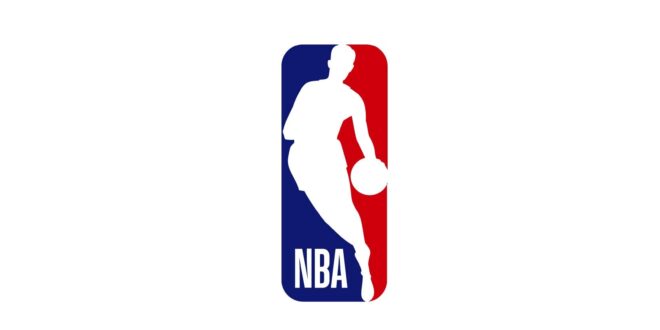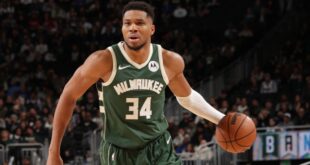What serves as a ceiling for one individual can be a floor for another; similarly, what constitutes a triumphant comeback for one team may signify a catastrophic failure for another. Ultimately, it revolves around perspective.
However, when a particular team consistently turns the tide in their favor, it can shift the focus from attributing blame to recognizing their performance as commendable. The Indiana Pacers have handed late-game losses to the Milwaukee Bucks, Cleveland Cavaliers, and New York Knicks throughout three rounds of the 2025 playoffs.
For the Bucks and Cavaliers, these defeats were particularly crushing. The ramifications of the Knicks’ 138-135 overtime setback—where the Pacers rallied from a 14-point deficit with under four minutes to go during their contest at Madison Square Garden—may not be fully apparent for a few days, but fans are likely to have some insights by Friday night (8 PM ET, TNT).
The Pacers, dubbed the “cardiac crew” of this postseason, have a decades-long history of dramatic comebacks. Here are some of their most remarkable moments:
On May 7, 1995, Reggie Miller produced one of the most memorable shooting displays in NBA playoff history.
Box score | Play-by-play
The scene: During the series opener at Madison Square Garden, the Knicks held a 105-99 lead with just 18.7 seconds remaining.
The sequence began innocently enough: Miller drilled a 3-pointer from the left wing. Just moments later, he intercepted a hurried inbounds pass from New York, who were out of timeouts and panicking. Miller stepped back to the arc and sank another three, leveling the score at 105-105.
With 13.2 seconds left, John Starks of the Knicks missed two free throws, and Patrick Ewing failed to convert on the follow-up from ten feet. Miller grabbed the rebound, was fouled, and calmly hit two free throws to give the Pacers a 107-105 advantage. The Knicks’ last possession ended without a shot, as guard Greg Anthony stumbled with the ball.
Miller’s accomplishment became famously known in basketball vernacular as “Eight Points, Nine Seconds.” Despite Indiana going up 3-1 in the series, they needed all seven games to move forward, only to be eliminated by Orlando in the Eastern Conference Finals.
On May 25, 1998, Miller hit a clutch 3-pointer with just 0.7 seconds remaining in Game 4 to secure a victory over the Bulls, tying the Eastern Conference Finals at 2-2.
Box score | Play-by-play
The scene: After losing the first two games, the Pacers rallied at home to win Game 3 and were desperate to even the series. They found themselves trailing by eight early in the fourth and then 94-93 with only 33 seconds left.
The final moments were chaotic, featuring a Bulls turnover, a missed shot from the Pacers, and botched free throws from Scottie Pippen with four seconds on the clock.
Coming out of a timeout, Miller maneuvered past a screen from the baseline to the 3-point line, creating some space from Michael Jordan, then received an inbounds pass from Derrick McKey. Miller’s shot ignited jubilation at Market Square Arena while Chicago still had 0.4 seconds left. Jordan’s attempt from three bounced off the glass and rim before falling out.
Indiana managed to challenge the “Last Dance” Bulls to a seven-game series before being eliminated. In a notable twist, while Indiana missed 14 of their 37 free throw attempts, the Bulls also struggled, hitting only 24 of 41.
Box score | Play-by-play
The scene: In a best-of-five first-round series, the Bucks and Pacers were tied at 2-2 and locked at 89-89 with 3:35 remaining in the decisive game.
This game is less remembered for any significant score margin and more for its intense finish, marked by 19 ties overall. The 13th lead change became particularly notable.
Milwaukee pulled ahead 94-93, but the Pacers capitalized on three missed shots and three offensive rebounds during a time-consuming last-minute scramble. Finally, guard Travis Best netted a 3-pointer with 16 seconds remaining. The drama continued as Ray Allen missed an easy layup, Ervin Johnson made only one of two free throws, and Jalen Rose missed both of his free throw attempts for Indiana with only two seconds left. Allen—who would later become famous for a last-second three-pointer in Miami—failed to connect from 31 feet as time expired.
Box score | Play-by-play
The scene: The Pacers were up 3-2 in the Eastern Conference Finals, playing at Madison Square Garden, aiming for their first appearance in the NBA Finals.
This moment was technically only a “comeback,” starting with the Knicks leading 65-62 at the start of the fourth quarter. From that point on, Miller erupted for 17 of his game-high 34 points, eliminating New York and marking what would be Hall of Famer Ewing’s final game as a Knick.
In another instance, after trailing by 20 in the first half, the Pacers secured a victory over the Bucks thanks to Tyrese Haliburton’s layup in the dying moments of overtime.
Box score | Play-by-play
The scene: The Pacers had won three of the first four games in a series that seemed destined for six. The Bucks were leading 118-111 with less than 40 seconds remaining in overtime.
Andrew Nembhard launched a 3-pointer with 34 seconds left, then stole the ball from Gary Trent Jr. This led to Haliburton’s and-1 layup with 17 seconds remaining, narrowing the gap to 118-117. Under pressure from the Pacers’ defense, the struggling Bucks turned the ball over, allowing Haliburton to drive past Giannis Antetokounmpo for the winning basket with just one second remaining.
Box score | Play-by-play
The scene: The top-seeded Cavaliers had lost the first game at home but had a strong lead of 14 points through three quarters and were ahead 119-112 with 57 seconds remaining.
As Aaron Nesmith prepared for his standout moment against the Knicks 15 days later, he made a timely dunk off Pascal Siakam’s second missed free throw. Donovan Mitchell was charged with an offensive foul, which set Siakam up for a driving layup with 27 seconds to go. After a timeout, Max Strus’ sideline inbounds pass was intercepted, but the Cavaliers appeared to be in control with a three-point lead as Haliburton headed to the free throw line with 12 seconds remaining.
In a twist, Haliburton missed the second shot, retrieved the tipped rebound, stepped back to the logo, dribbled against Ty Jerome, and launched a last-second 3-pointer. With just one second remaining, the shot clinched a 120-119 victory for Indiana, delivering a devastating blow to Cleveland, who would ultimately fall in five games.
Get an inside look as the Pacers stage a remarkable comeback in Game 1 of the Eastern Conference Finals, shocking the Knicks at Madison Square Garden.
Box score | Play-by-play
The scene: The Pacers outdid their previous comebacks this time. Previously down by seven, they now faced a 116-102 deficit with just 3:25 to go.
Indiana strategically utilized 153 of the remaining 205 seconds, narrowing the deficit to nine at 121-112 with 52 seconds left. The Knicks continued to score but not enough to fend them off. Nesmith, who hit six 3-pointers in the last five minutes of regulation, converted two free throws to bring the score to 124-123, while OG Anunoby made one of two free throws for New York.
In the final seven seconds of this fourth quarter, Haliburton had to make several quick decisions. He sliced through the Knicks’ defense but encountered Mitchell Robinson, the shot-blocker. Unsatisfied with his passing options for Myles Turner or Nesmith, he retreated to the perimeter and launched a shot with one foot on the line. The follow-through resulted in a high bounce off the back rim that then fell straight down, counting as a two-pointer instead of a three, forcing the game into overtime.
The Knicks maintained their last lead at 135-134 with 35 seconds left in the extra session. But Nembhard’s layup and Obi Toppin’s second dunk sealed the deal, while Jalen Brunson and Karl-Anthony Towns failed to hit three-pointers in the final moments.
***
Steve Aschburner has been covering the NBA since 1980. You can reach him via email, view his archive, and follow him on X.
The opinions expressed on this page do not necessarily represent those of the NBA, its teams, or Warner Bros. Discovery.
 NBA News NBA News, Match Reports and Updates
NBA News NBA News, Match Reports and Updates



